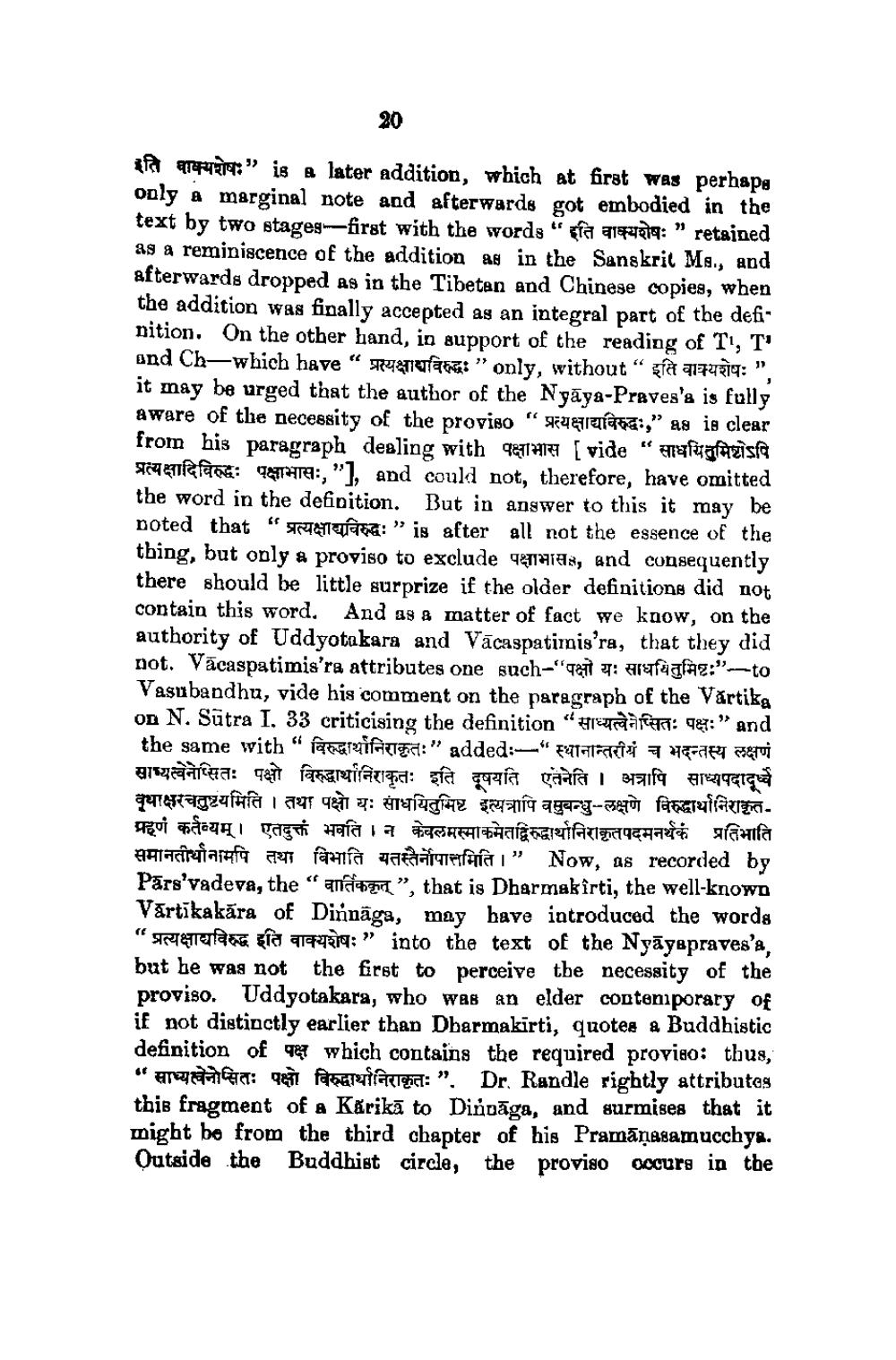________________
fa aparat: " is a later addition, which at first was perhaps only a marginal note and afterwards got embodied in the text by two stage--first with the words "fa 9144879: ” retained as a reminiscence of the addition an in the Sanskrit Ms., and afterwards dropped as in the Tibetan and Chinese copies, when the addition was finally accepted as an integral part of the definition. On the other hand, in support of the reading of T', T' and Ch—which have“ umurlar: " only, without“ íà 2174974: ", it may be urged that the author of the Nyāya-Praves'a is fully aware of the necessity of the proviso " 941viata," as is clear from his paragraph dealing with पक्षाभास [vide " साधयितुमिष्टोऽपि safafang: qara:,'], and could not, therefore, have omitted the word in the definition. But in answer to this it may be noted that " T ha: " is after all not the essence of the thing, but only a proviso to exclude 4 1s, and consequently there should be little surprize if the older definitions did not contain this word. And as & matter of fact we know, on the authority of Uddyotakara and Vācaspatimis'ra, that they did not. Vācaspatimis'ra attributes one such-"TIT : arsfuglaz:"-to
Vasubandhu, vide his comment on the paragraph of the Vårtika On N. Sūtra 1. 33 criticising the definition "H ora: 18:” and the same with " lacerata :" added:-" FATFITSi q Faktem साध्यत्वेनेप्सितः पक्षो विरुद्धार्थानिराकृतः इति दूषयति एतनेति । अत्रापि साध्यपदादूधै वृथाक्षरचतुष्टयमिति । तथा पक्षो यः साधयितुभिष्ट इत्यत्रापि वसुबन्धु-लक्षणे विरुद्धार्थानिराकृत. प्रहणं कर्तव्यम्। एतदुक्तं भवति । न केवलमस्माकमेतद्विरुद्धार्थानिराकृतपदमनर्थकं प्रतिभाति Airiertarafa al famila Jakaru finiat I". Now, as recorded by Pars'vadeva, the "andat”, that is Dharmakîrti, the well-known Vārtikakăra of Dinnāga, may have introduced the words "re a la 914789: " into the text of the Nyāyapraves's, but he was not the first to perceive the necessity of the proviso. Uddyotakara, who was an elder contemporary of if not distinctly earlier than Dharmakirti, quotes a Buddhistic definition of the which contains the required proviso: thus, “Tr goa: at pamantareat: ". Dr. Randle rightly attributes this fragment of a Kárikā to Dingāga, and surmises that it might be from the third chapter of his Pramāṇasamucchye. Qutside the Buddhist circle, the proviso socurs in the




